Amy Laugesen pulls the figures of horses from the earth. From her hands horses emerge from clay in her Southern Colorado studio, inspired by visions of the landscapes before her. She sees them in shadows dancing across the land, in the curves of rolling hills, in the layered ridges of the distant Sangre de Cristo mountain range. From Laugesen’s perspective, every landscape shows her the forms of horses and herds galloping upon them or curling up in the foothills for rest. Laugesen’s work is informed by both eastern and western techniques, glazes and forms, and they appear both ancient and timeless, just like her subjects.
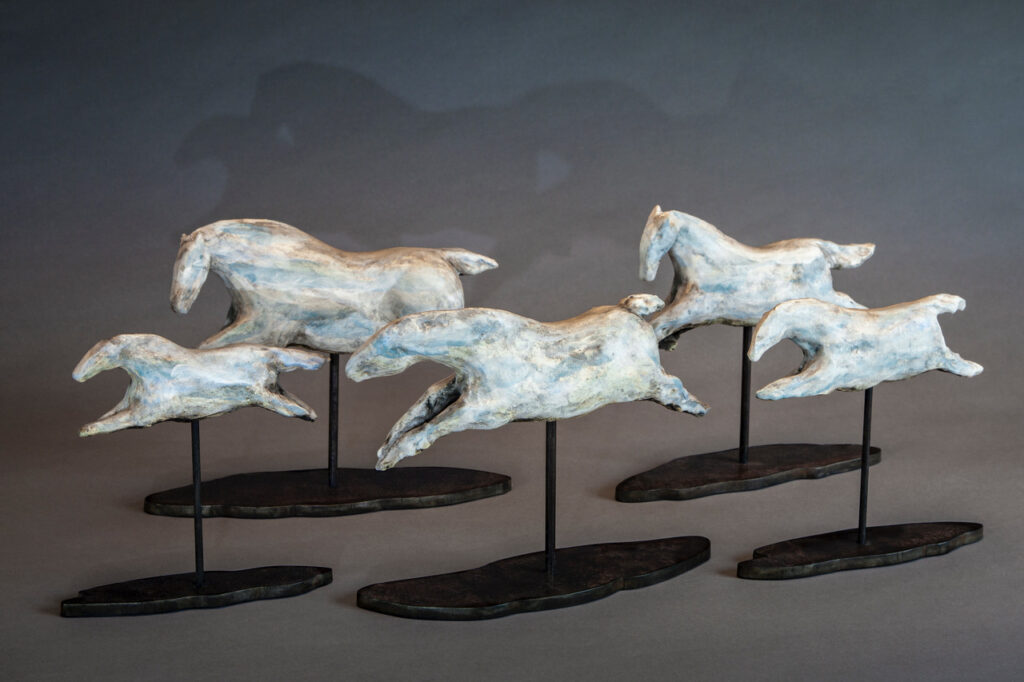
Living on the shoulder of the Sangre de Cristo Mountains in Southwest Colorado, I love watching the clouds and the cloud shadows roll across the San Luis Valley. I am always looking for horses in the landscape around me. Seeing a herd of horses in the cloud formations inspired the grouping of sculptures. Cloud Play has a painterly style application of underglaze and clear matte glaze to give them a cloud like appearance. The set of five have individual bases made of steel and each base is uniquely cut in the shape of the ceramic horse ‘cloud’ to appear as a shadow below the sculpture.This sculpture is intended to evoke memories of childhood; laying back in the grass and seeing animals in the clouds.
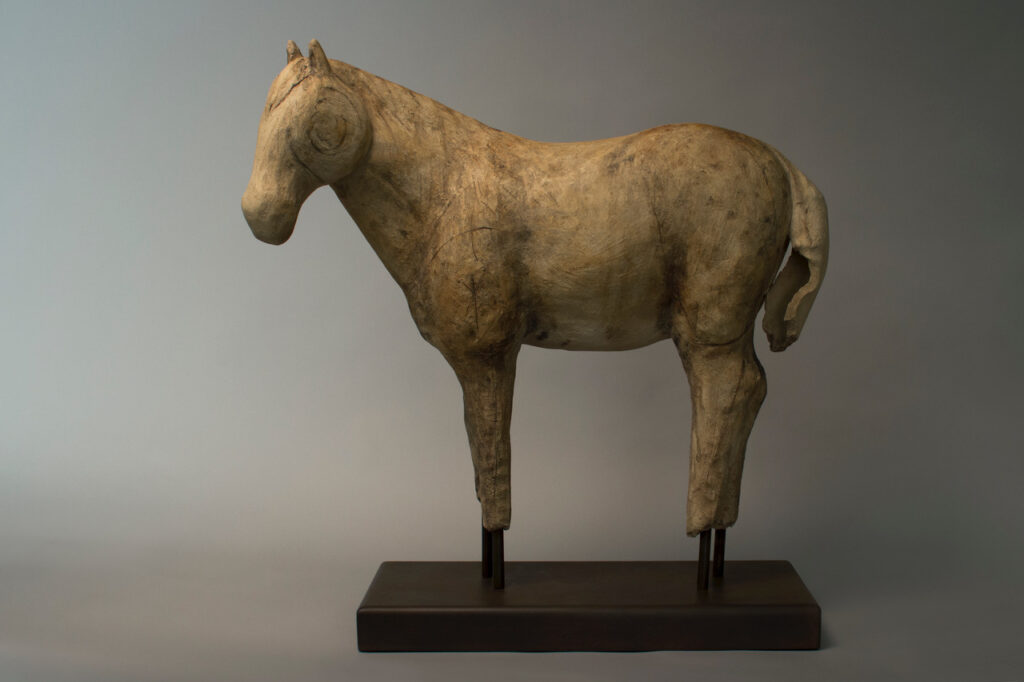
The “Wild Horse,” carved from mammoth ivory and found in the Vogelherd caves in Germany is the oldest known sculpture of a horse (Aurignacian period, 35,000 – 31,000 years old). Ancient One is a nod to all the ancient horse relics and artifacts that continue to be an inspiration for my work. The glaze technique is a Mason Stain wash that is fired onto the surface of the clay body of the horse sculpture.
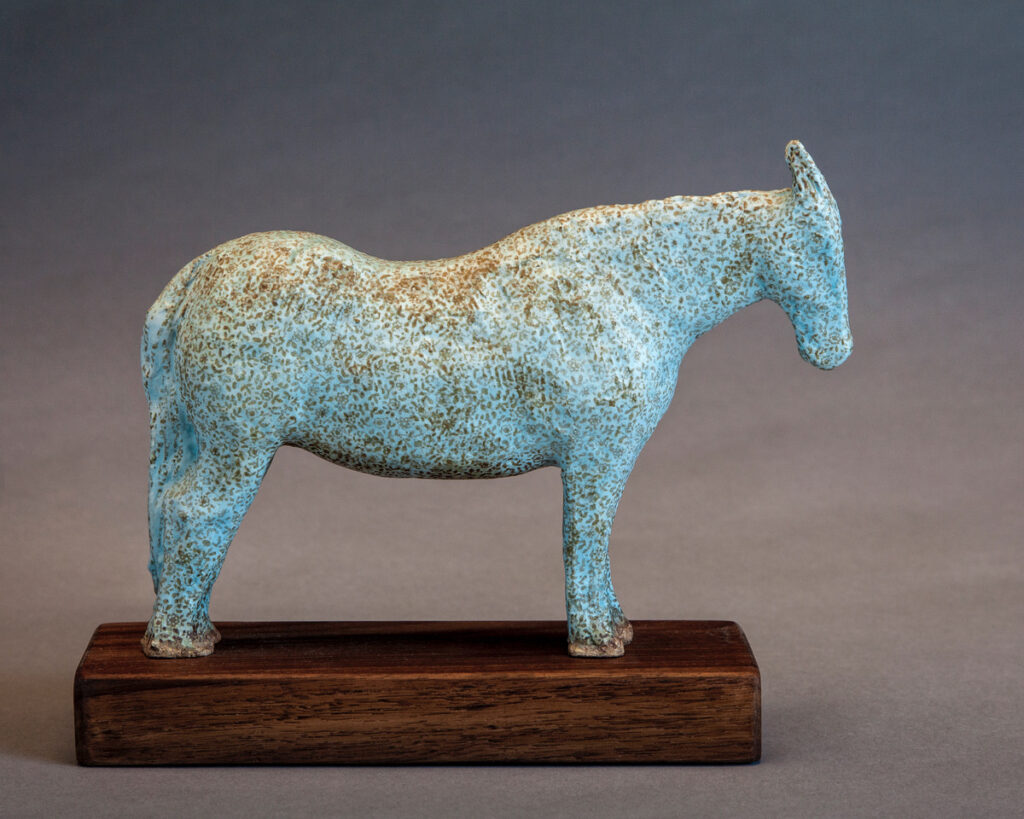
I’ve always explored the historic and reverent importance of horses in both eastern and western culture, and I am now exploring the important roles that mules have played in the West. We have a couple mules in our little town of Crestone, CO and the mule historically has played an important role in the San Luis Valley. A female ‘mare mule’ is also known as a “molly,” and mules, as is depicted here in Molly – The Mule, have become a new subject for me. The floral pattern on the Molly sculpture was inspired by old homesteads of the San Luis Valley that I’ve witnessed, remnants of flowered wallpaper curling on walls of the ruins of a home. I created the pattern on the surface through the application of decals fired onto this ceramic sculpture.
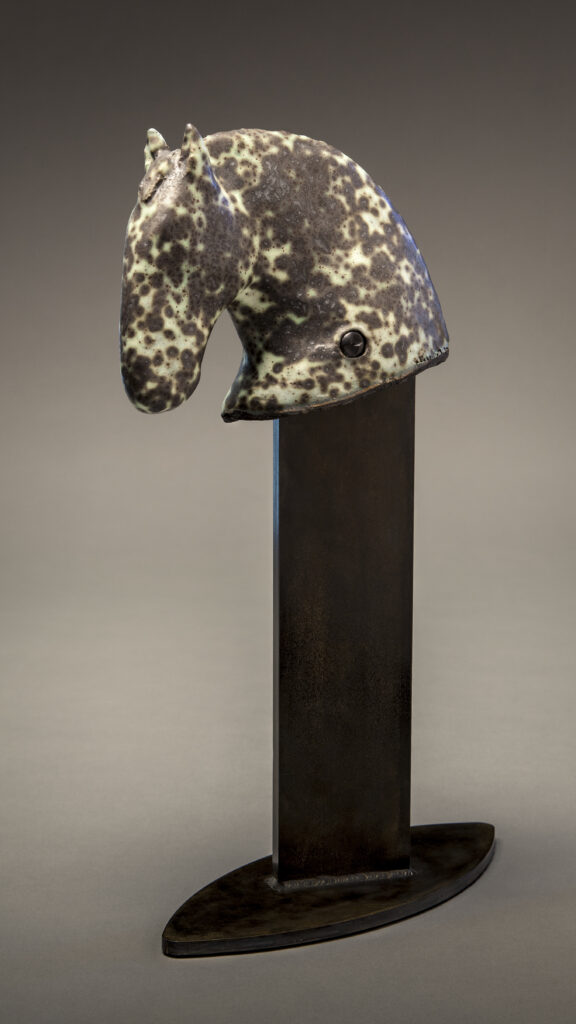
Philosopher got its title, with the help of my husband Stephen, because of its noble look like a bust of a notable individual symbolizing wisdom, power and prestige – fitting for a horse, and mounted on a steel base. The glaze is one of my favorites for spotted pattern created when fired like the spotted Appaloosa breed in North America.
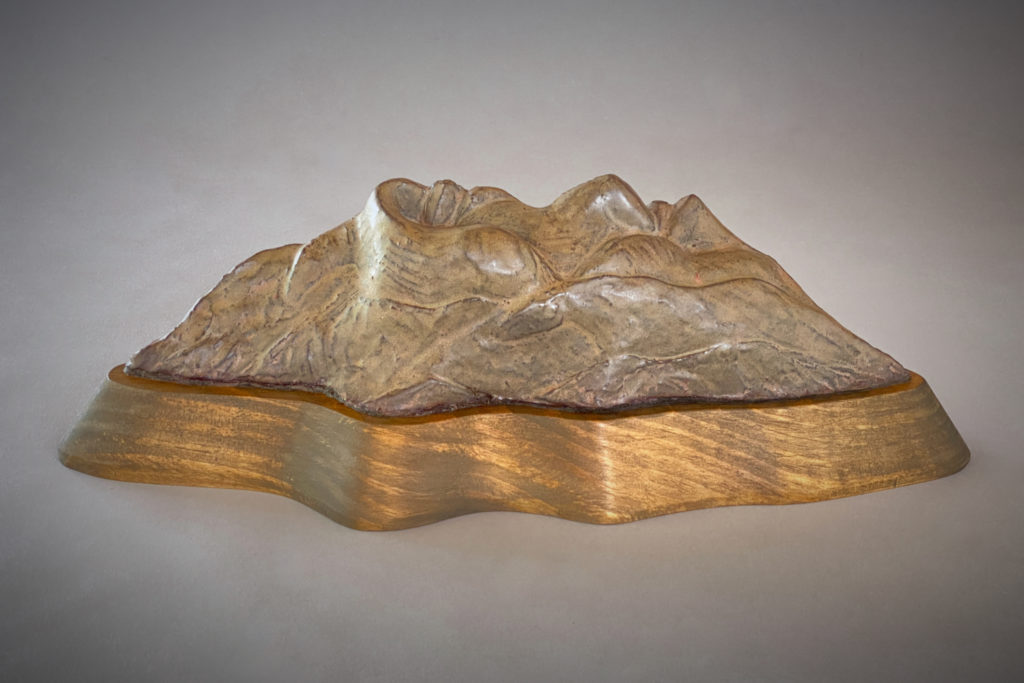
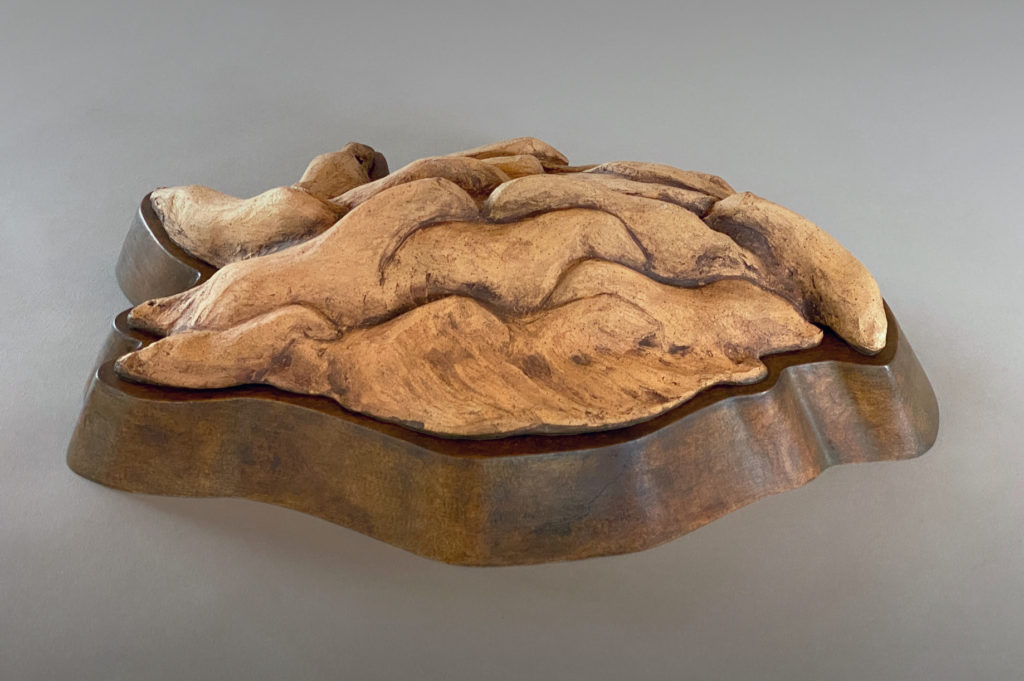
Amy Laugesen is a Colorado-based sculptor with classic training in the arts, including an Associate of Arts Degree from Marymount Palos Verdes College in 1998, and a Bachelor of Fine Arts Degree from School of the Museum of Fine Arts & Tufts University in 1995, where she concentrated in sculpture and public art. Amy currently works as a professional mixed media sculptor, art educator, and experienced sculpture maintenance technician. Laugesen is known for her modern-day equine “relics” that span from large-scale commissioned public artworks to small mixed-media treasures. Mainly working with ceramics, Laugesen has mastered techniques to create works that look ancient, drawing from Eastern and Western clay sculpting traditions, and a variety of glazing techniques to achieve the unique color of each sculpture. Her ceramics are paired with vintage metals, porcelain casters, and metal, wood, or stone bases.